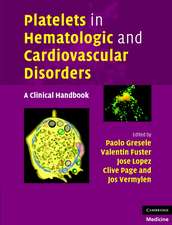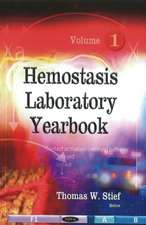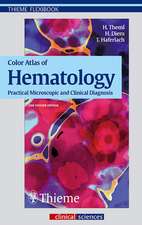Basic Aspects of Blood Trauma: A Workshop Symposium on Basic Aspects of Blood Trauma in Extracorporeal Oxygenation held at Stolberg near Aachen, Federal Republic of Germany, November 21–23, 1978
Editat de Holger Schmid-Schönbein, P. Teitelen Limba Engleză Paperback – 31 oct 1979
Preț: 375.70 lei
Preț vechi: 395.47 lei
-5% Nou
Puncte Express: 564
Preț estimativ în valută:
71.89€ • 75.26$ • 59.48£
71.89€ • 75.26$ • 59.48£
Carte tipărită la comandă
Livrare economică 05-19 aprilie
Preluare comenzi: 021 569.72.76
Specificații
ISBN-13: 9789024722792
ISBN-10: 9024722799
Pagini: 424
Ilustrații: 416 p. 34 illus.
Dimensiuni: 155 x 235 x 22 mm
Greutate: 0.59 kg
Ediția:Softcover reprint of the original 1st ed. 1979
Editura: SPRINGER NETHERLANDS
Colecția Springer
Locul publicării:Dordrecht, Netherlands
ISBN-10: 9024722799
Pagini: 424
Ilustrații: 416 p. 34 illus.
Dimensiuni: 155 x 235 x 22 mm
Greutate: 0.59 kg
Ediția:Softcover reprint of the original 1st ed. 1979
Editura: SPRINGER NETHERLANDS
Colecția Springer
Locul publicării:Dordrecht, Netherlands
Public țintă
ResearchCuprins
1. Biological analysis of blood trauma: the response of the unspecific defense system to foreign technical apparatus.- 2. Considerations of platelet function mechanisms.- Discussion (moderator G.V.R. Born).- 3. Stimulation of human platelets under the influence of high shear stresses in tube flow.- Discussion (moderator G.V.R. Born).- 4. The induction of intravascular thrombi in vivo by means of localised hydodynamic shear stresses.- Discussion (moderator Williams).- 5. Species differences in platelet aggregation with special reference to heparin as anticoagulant.- Discussion (moderator H.C. Hemker).- 6. Fluid dynamic aspects of the blood cell-vessel wall interaction.- Discussion (moderator H.C. Hemker).- 7. The role of surfaces in the mechanism of blood coagulation.- Discussion (moderator E. Wenzel).- 8. Blood trauma and hypercoagulability produced by extracorporeal circulation.- Discussion (moderator E. Wenzel).- 9. Electro-optical investigations of the fibrinogen-fibrin conversion in artificial membranes.- Discussion (moderator H.C. Hemker).- 10. Fluid dynamic aspects of mechanical haemolysis.- 11. Cellular blood damage caused by foreign materials: An engineers view of the problem.- Discussion (moderator H.C. Engell).- 12. Micromechanics of the red cell in viscometrie flow.- Discussion (moderator Williams).- 13. Effect of extracorporeal circulation with different oxygenators on the volume of red blood cells.- Discussion (moderator Williams).- 14. Mechanical red cell disruption.- Discussion (moderator Williams).- 15. ADP release from red cells subjected of high shear stresses.- Discussion (moderator Born).- 16. Effects of cardiac surgery and cardio-pulmonary bypass on human immune system.- Discussion (moderator D. Laurant).- 17. Susceptibility to infections related toextracorporeal circulation: sources of infection, granulocyte function and immunoglobulins.- Discussion (moderator D. Laurant).- 18. Protein denaturation and the effect of heparin during extracorporeal circulation.- Discussion (moderator D. Laurant).- Condensation of general discussion.- List of participants.








